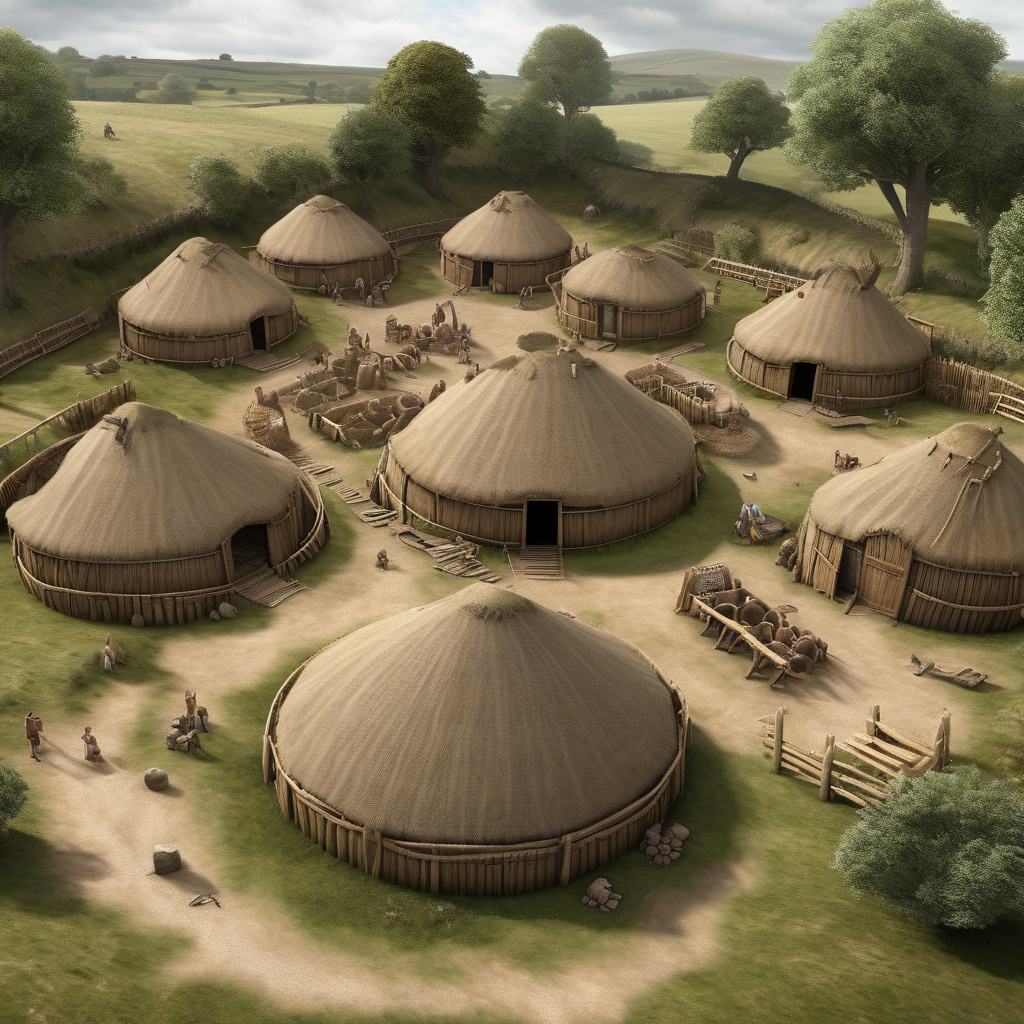Ancient Roundhouses and Artefacts Unearthed in UK’s 2,400-Year-Old Iron Age Village
Archaeologists have unearthed a previously unknown settlement that is rewriting the history of Britain’s transition into the Iron Age. This groundbreaking discovery sheds light on the ancient way of life in the region and provides valuable insights into the cultural and technological advancements of the time.
The site, located in the UK, revealed a series of remarkably well-preserved roundhouses dating back 2,400 years. These roundhouses, typical of the Iron Age period, were constructed with wooden frames and walls made of a mixture of clay, straw, and animal dung. The discovery of these structures offers a glimpse into how ancient Britons lived, highlighting their architectural skills and resourcefulness in utilizing locally available materials.
In addition to the roundhouses, a wealth of artefacts was found at the site, providing archaeologists with a treasure trove of information about the daily lives of the settlement’s inhabitants. Among the discoveries were pottery fragments, tools made of bone and antler, and even remnants of food such as charred grains and seeds. These artefacts offer valuable clues about the diet, craftsmanship, and social practices of the Iron Age community.
One of the most significant finds at the site was a well-preserved quern stone used for grinding grain into flour. This artefact not only speaks to the importance of agriculture in the community but also hints at the existence of a sophisticated food production system. The discovery of such tools underscores the ingenuity and technological prowess of the ancient Britons, who developed innovative solutions to meet their daily needs.
Furthermore, the layout of the settlement and the positioning of the roundhouses suggest a carefully planned community with a clear social structure. The presence of communal spaces and shared amenities points to a sense of unity and cooperation among the inhabitants. This organized layout provides valuable insights into the social dynamics and governance of the Iron Age village, challenging previous assumptions about the period.
The excavation of this Iron Age settlement represents a significant milestone in archaeological research, offering a rare opportunity to study a previously unknown site from a crucial period in Britain’s history. By piecing together the fragments of pottery, tools, and structures, archaeologists can reconstruct the daily lives and cultural practices of the ancient Britons, painting a vivid picture of their society.
As researchers continue to analyze the artefacts and unearth more details about the site, there is no doubt that this discovery will contribute to our understanding of Britain’s ancient past. The insights gained from this excavation will not only enrich our knowledge of the Iron Age but also provide valuable context for future studies of prehistoric societies and their development over time.
In conclusion, the unearthing of the 2,400-year-old Iron Age village in the UK stands as a testament to the significance of archaeological research in unraveling the mysteries of the past. Through the discovery of ancient roundhouses and artefacts, we are able to glimpse into the lives of our ancestors and appreciate the rich cultural heritage that has shaped the world we live in today.
archaeology, IronAge, BritishHistory, culturalheritage, ancientcivilizations












